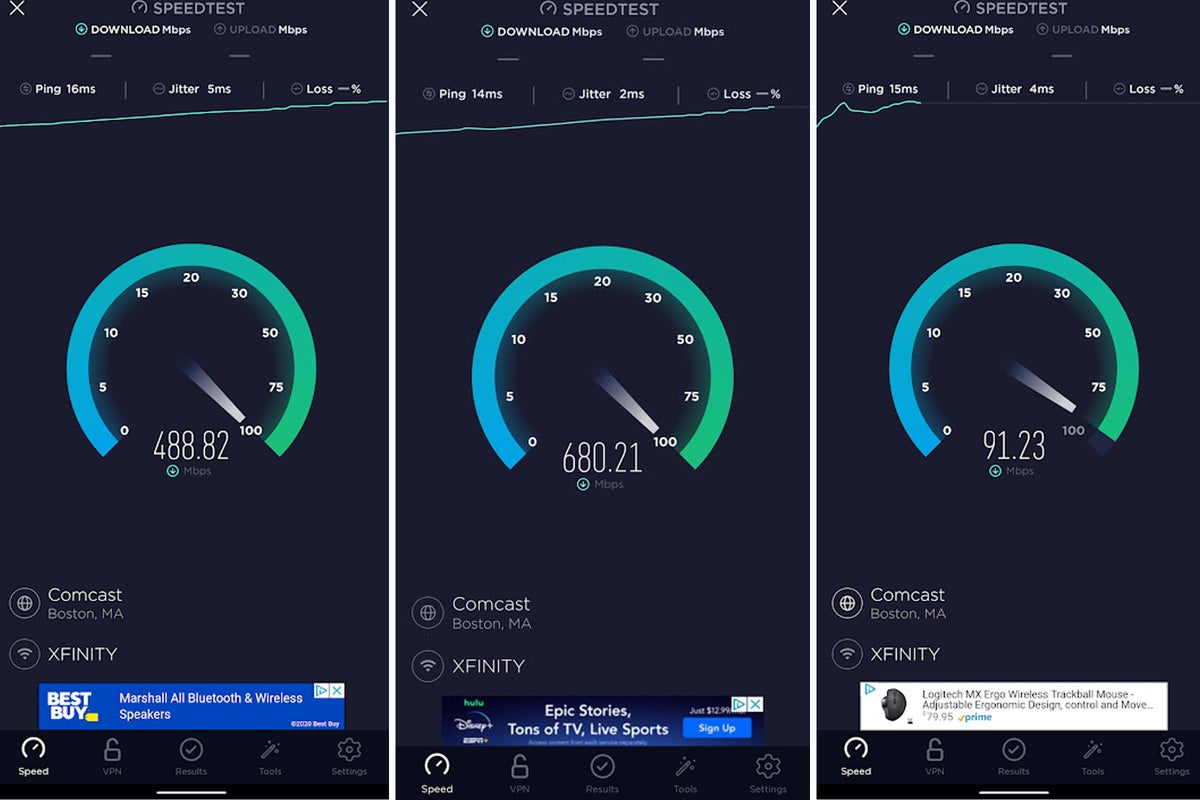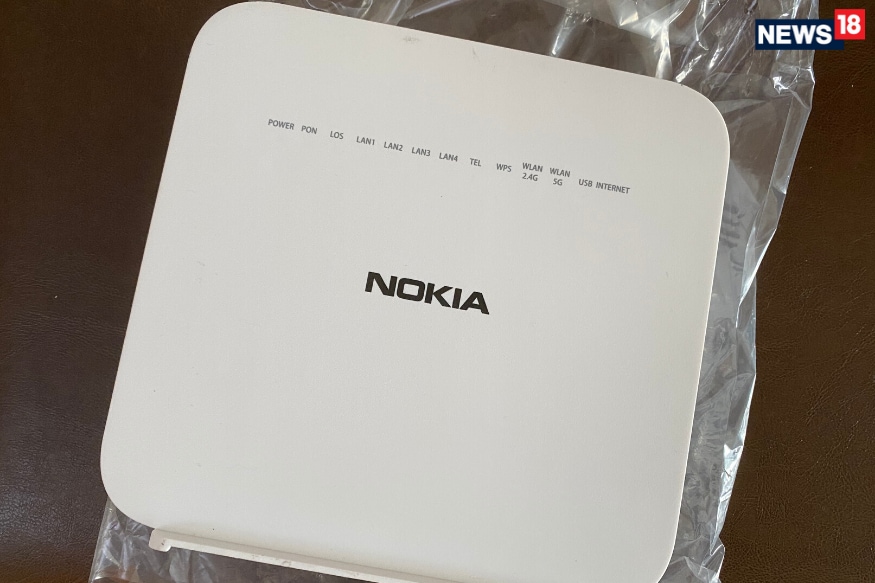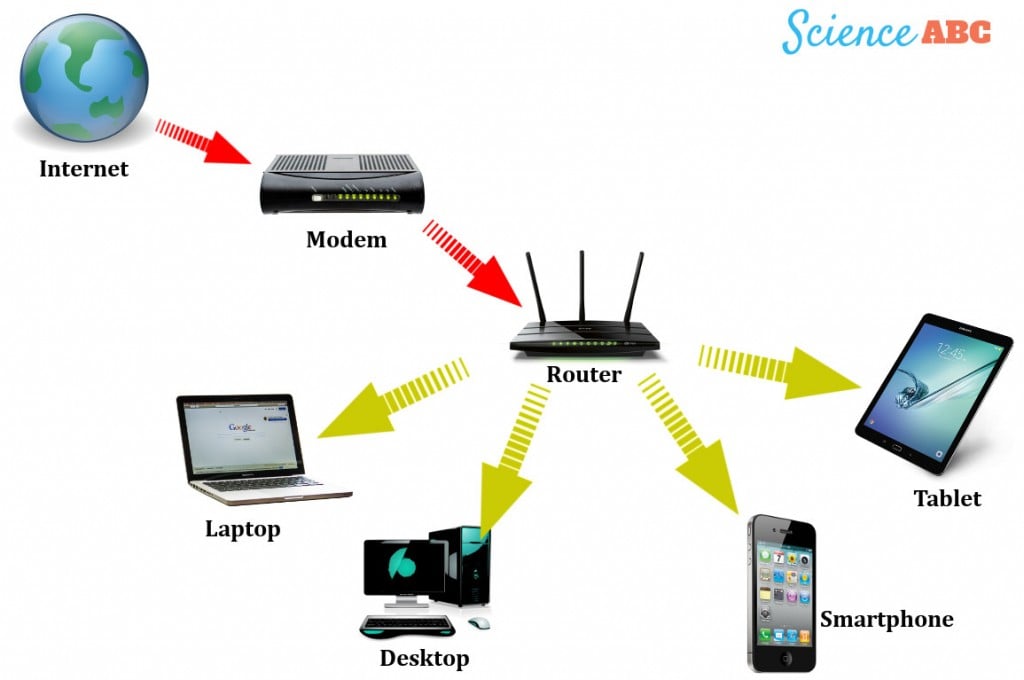The best Wi-Fi routers in 2022, according to experts
Table of Content
Another benefit of this router is the inclusion of dual-band Wi-Fi (2.4GHz and 5GHz), which gives you more control and flexibility when deciding between signal speed and range. In addition, this modem/router combo has four Gigabit Ethernet ports, which should be an ample amount, even for those who prefer wired connections. As a router-modem combo, it solves two problems facing those moving away from Xfinity’s unit. It offers theoretical Wi-Fi speeds up to 1900 Mbps, although it pairs best with Xfinity plans that don’t exceed 800 Mbps. Good 1800 square foot Wi-Fi range means this is a strong pick for larger homes.

We recorded all the results of these tests, and threw in the results of Cloudflare’s Internet Speed Test, run from the desktop computer, as an extra data point. These tests gave us a clear picture of how the routers performed on a small number of devices at extreme range and optimal conditions, as well as a large number of diverse devices in fairly taxing conditions. The Asus RT-AX86U has excellent speed and range, and can handle several people streaming 4K video, playing online games, working from home and taking video calls at the same time.
Previous testing (2018 and earlier)
It’s a reliable option for a small home or an apartment with a few people and their devices. The only potential downside to the MG7700 is that it is limited to DOCSIS 3.0 rather than the newer DOCSIS 3.1. While this isn’t an issue for most, if you want those higher speeds in the future, you might be left wanting. The two bands can be broken down further into channels, or narrower sections of the radio spectrum, but this usually isn't necessary unless you're doing a pinpoint analysis of what frequencies are best in a specific area.

Most modern modem routers have at least 16 downstream channels, which should be more than enough for normal internet purposes. If you look at the technical specs of any modem router then you will probably see some pairs of numbers that range from 8 x 4 to 32 x 8. These numbers refer to the number of downstream and upstream channels the router has. Very roughly, the number of downstream and upstream channels indicates how much download and upload data your router can use at one time.
How Can I Speed up My Wi-Fi Router?
We drew our eight criteria below from research, as well as extensive testing. Instead of testing for the maximum throughput from a single laptop, we used four laptops, spaced around 2,300 square feet of a two-story suburban home, to simulate the real-world activity of a busy home network. We repeated each test set six times and averaged the results to smooth out spikes.

The mobile app makes it much easier to monitor which devices are connected and how much they are consuming the network. NETGEAR AX12 offers a wide 2500 square feet WiFi range that is enough for most large homes. If your house has an area larger than 2500 square feet, you can add a mesh router to extend the reach.
A Solid Alternative to the TP-Link Archer AX50 (AX
The WiFi router is the most important piece of hardware for your home and office. If you are still not sure about it and want to know what are things to consider before buying a great WiFi router, read this article first. EXPERIENCE THE EERO TRUEMESH DIFFERENCE - eero’s patented TrueMesh technology intelligently routes traffic to reduce drop-offs and dead spots. Bill Thomas has been covering tech for several years, and has extensive experience with PC hardware, networking gear, and gaming. Rich Scherr is a seasoned technology and financial journalist who spent nearly two decades as the editor of Potomac and Bay Area Tech Wire.

Target Wake Time is designed to reduce power consumption by allowing devices to determine when and how often they will wake up to begin sending and receiving data. TWT tech is expected to extend the battery life of mobile devices such as smartphones and tablets, as well as battery-powered smart home devices such as security cameras and video doorbells. If you’re ready to test the Wi-Fi 6 waters but funds are limited, the $79.99 Rock Space AX1800 is worth a look. You don’t get features like multi-gig WAN/LAN and USB ports with this router, nor does it support 160MHz channel bandwidth, but it’s easy to install and manage. If you require a more powerful Wi-Fi 6 router with USB connectivity and lifetime parental control and network security software, the TP-Link Archer AX50 is a better, albeit more expensive, choice.
How to choose a good WiFi router?
This refers to the specific IEEE local area network standards, sort of like citing chapter and page for reference. But when the 802.11ax protocol arrived, there was a broad decision to change the naming conventions and simply call it "Wi-Fi 6" to make things easier for the consumer. The next protocol will almost certainly be called Wi-Fi 7, but that's still years away. It's a perfect fit for a home that doesn't need a ton of speed or extra-wide coverage but would still like to benefit from quality-of-life features. We hope the above picks give you some food for thought as you make the wise choice of abandoning those draining monthly rental fees. Should you have any questions, concerns, or suggestions, don’t hesitate to get in touch by penning us a message in the comments section below.
This expanded wireless standard, promoted during recent CES trade shows, takes advantage of deregulated 6 GHz radio frequencies. Laptops and phones that are 6 GHz compatible are still rare, but we think the new bands will be useful for wireless backhaul between a router and satellites (such as in a mesh-networking kit). So far, Asus has released the ROG Rapture GT-AXE11000 gaming router, but others, including the TP-Link Archer AX75, Archer AX96, AXE200 Omni, and Archer AX206, will follow. We also made sure to enable each router’s load-balancing band-steering feature, when applicable, to make sure that the routers would properly distribute our client laptops across all available bands to improve performance. We didn’t touch most of the other settings—you should be able to connect to your Wi-Fi and have it work without constantly fiddling with things.
Throw in Beamforming+ tech, healthy 1800 square foot Wi-Fi coverage, a powerful 1.6 GHz processor, three amplified three dual-band internal antennas, and the Netgear Nighthawk C7000 offers a focused, reliable Wi-Fi signal throughout the home. On the unit itself, there are four Gigabit Ethernet ports and a single USB 2.0 port. If the picks above are too expensive, the slightly more affordable TP-Link Archer GX90 (8/10 WIRED Recommends) might tempt you. It looks like a Sith spider, with a square design and eight antennas, but this gaming-focused behemoth is feature-packed. It's easy to set up and configure, and it bathed my whole home in fast Wi-Fi. There’s a game accelerator feature and prioritization, making it easy to reserve bandwidth for gaming.

This tradeoff is simply due to how information is encoded in wireless signals. Wireless signals encode information in the pattern of electromagnetic waves that they produce. First, you need to pick a router/modem combo that is compatible with your particular ISP. Generally, this is not a big deal as most larger ISP companies like Comcast or Cox are compatible with pretty much any router/modem combo. Smaller ISP companies may not have support for different kinds of router/modem combos.
It performed on our tests as well as the TP-Link Archer AX20, which costs half as much, so we’ve placed the MR5500 here among the rest of the competition. Again, the Asus RT-AX88U was able to speedily serve each client simultaneously, with a minimal wait between each request. At the bottom of the chart, the longer browsing bars for the TP-Link Archer A7 and D-Link R15 show that you’ll be sitting there waiting for a few seconds if other devices are stressing the network at the same time.
The TP-Link Archer C7 AC1750 churned out some of the fastest throughput scores we’ve seen from a sub-$100 Wi-Fi 5 (802.11ac) router. Its web-based management console could be more user-friendly, but it offers lots of settings for people who like to customize their networks. Throw in a nice assortment of I/O ports, and you’ve got an excellent budget router. The Asus RT-AC66U is a reasonably priced dual-band Wi-Fi 5 router whose performance, robust features, and affordability earn it an Editors' Choice award. It may not offer the latest and greatest Wi-Fi technology, but it performed quite well on our throughput tests and was a snap to install. We especially like the included Trend Micro malware protection, which can block malicious sites for all devices on your network.

Comments
Post a Comment